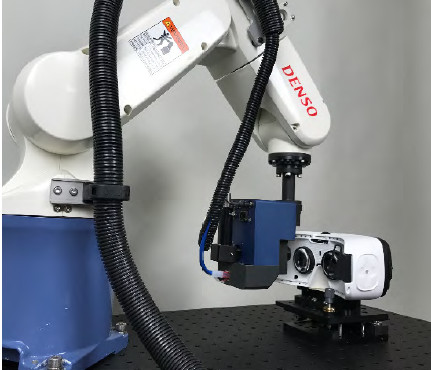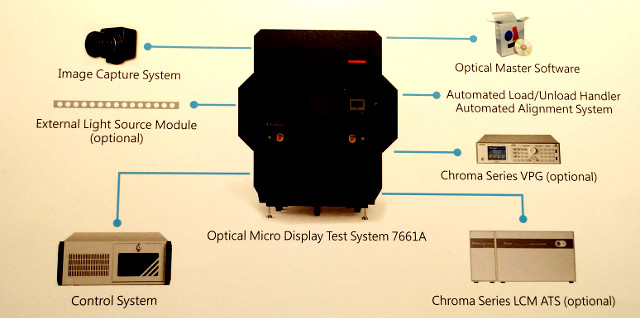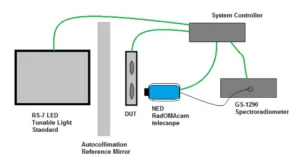We saw new developments in near eye display metrology at SID DisplayWeek from Gamma Scientific, Photo Research and Chroma. These are new tools that have been developed because of the unusual measurement needs of near eye display, particularly VR and AR types where the need is now quite obvious.
Unlike conventional flat panel display, VR and AR displays create a virtual image that has a sweet spot viewing zone where the image is fully visible. This sweet spot (actually volume) is characterized with a horizontal and vertical extent (exit pupil), a depth extent (eye box) and the position of the beginning of the eye box relative to the closest optical element (eye relief). Parameters like image uniformity are typically measured with an imaging colorimeter while contrast, luminance and color performance may be measured with a spectroradiometer or other device with a very narrow field of view.
These instruments work fine on flat panel or projected images, but are not well suited for near eye displays. In particular, the aperture of single element spectroradiometers or colorimeters are usually in the 20 to 40 mm range so when trying to measure a VR/AR display with an exit pupil of 10 mm, it underfills the entrance pupil to the instrument. This will lead to errors, so an instrument with a much smaller entrance pupil is needed (with a lot more sensitivity too). Such instruments also need to be small to capture data from the sweet spot volume. In addition, it is desirable to be able to change the FOV of the instrument so that the full image or only parts of the image can be measured.
In addition, the sweet spot is too small to use an imaging colorimeter for uniformity measurements, so some sort of scanning of the small aperture instrument is likely to be needed.
Gamma Scientific has developed a solution called the Near Eye Display (NED) Measurement System, GS-1290NED. It is a physically compact telescope with 5 mm diameter entrance pupil, coupled to a GS-1290 CCD detector-based grating spectroradiometer (backside illuminated CCD with a TE cooler for good sensitivity). A series of six apertures can be automatically inserted at the field stop of the telescope system to define FOV sizes of 5°, 2°, 1°, 0.5°, 0.33° and 0.1°. In addition, the instrument also includes a graphics generator to display test patterns and color fields, an autocollimation reference mirror, and an LED based tunable light standard.
This instrument also has a beamsplitter assembly that can be inserted in the “viewing mode”. This has the advantage of helping to align the desired measurement area, but it can also determine the pointing angle of the optics and any shift (parallax) between the two eye pieces in a VR headset.
For spectral measurements, the beamsplitter assembly is replaced with a fiber optic to couple to an external spectroradiometer. To measure brightness uniformity, the instrument is mounted on a computer controlled positioning stage. The stage can also pivot from a central point to mimic eye movement.

There remains some debate as to what entrance pupil measurements should standardize on. Bruce Denning of gamma Scientific thinks 5 mm is good for VR, but maybe 3mm is better for AR because of the higher luminance levels. Denning said the fully automated system costs on the order of $100K.
Chroma has released the model 7661A for automated testing microdisplays as well as AR/VR headsets. It includes a high resolution camera, colorimeter or MTF test equipment. As a result, it can measure uniformity, chromaticity, luminance, contrast field of view, MTF, distortion and chromatic analysis.

Photo Research is working on a new telecentric lens design specifically for VR/AR testing. The advantage of a telecentric design is that it minimizes changes in image size with position of the object. – CC

